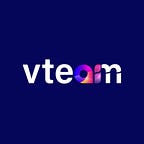Navigating the Landscape of Language Models: From GPT-3 to Falcon-40B
READ THE FULL BLOG HERE
Language models have revolutionized the field of Natural Language Processing (NLP), enabling machines to understand and generate human-like text. Among the most prominent players in this realm are Large Language Models (LLMs) such as BERT, GPT-3, and T5, each pushing the boundaries of what AI can achieve in language comprehension and generation. In this blog, we’ll delve into the world of LLMs, explore the underlying concepts of Transformers and Attention mechanisms, and highlight some of the most notable models that have captured our attention.
Transforming Language with Attention Mechanism
At the heart of all LLMs lies the transformative power of the Transformer architecture, with the Attention mechanism as its core. The Transformer consists of two key components: the Encoder and the Decoder neural networks. Attention assigns varying importance to key tokens in input sequences, enhancing the model’s understanding of context and relationships within the text.
The Multi-Head Attention Layer takes comprehension to the next level by analyzing different aspects of the language simultaneously. It’s intriguing to note that different interpretations of shared questions can lead to varied responses in the Multi-Head Attention layer, showcasing the dynamic nature of language understanding.
BERT & GPT: Beyond the Transformers
BERT and GPT represent two cornerstones in the world of LLMs, both having evolved from the Transformer architecture.
1. Bidirectional Training: BERT and GPT adopt bidirectional training, considering both left and right context to understand the context better.
2. Pre-training with Masked Language Model: Both models learn contextual word representations through masked token prediction during pre-training.
3. Language Understanding: BERT and GPT prioritize general language understanding over task-specific information.
4. Transfer Learning: Fine-tuning empowers these models to adapt to various NLP tasks, often achieving state-of-the-art results.
5. GPT’s Generative Capabilities: GPT’s architecture makes it exceptionally well-suited for language generation tasks.
The Evolution of Transformers: From BERT to GPT and Beyond
The evolution of Transformers led to models like BERT (Bidirectional Encoder Representations from Transformers) and GPT (Generative Pre-trained Transformer). These models, with their unique focus and architecture, laid the foundation for the advancements that followed. Today, GPT-3 stands as a testament to the astounding capabilities that LLMs can achieve.
Introducing GPT-3.5 and Beyond
GPT-3.5 represents an improved iteration over its predecessor, addressing limitations and enhancing context understanding. Its linguistic finesse has been optimized, allowing it to grasp dialects, emotions, and complex questions more effectively. GPT-3.5 also boasts an increased token limit of 32,000, enabling longer interactions and more in-depth responses.
Falcon-40B: Scaling New Heights
The Falcon-40B AI Model demonstrates the staggering potential of LLMs. With a causal decoder-only architecture and 40 billion parameters, it ranks among the largest publicly available LLMs. Trained on an extensive dataset and designed for transparency, Falcon-40B holds the promise of customization for various tasks.
T5 Language Model: The Text-to-Text Transformer
The Text-to-Text Transfer Transformer (T5) presents a versatile approach to language tasks. By converting diverse language problems into a unified text-to-text format, T5 simplifies task handling. Its combination of supervised and self-supervised training paves the way for impressive results across summarization, question-answering, and text classification tasks.
StableLM: Striking the Balance
StableLM, offered by Stability AI, offers a suite of large language models catering to different needs. Available in various parameter versions, it excels in performance with fewer parameters. With a transparent and open-source nature, StableLM encourages inspection and verification, aligning with responsible AI practices.
Navigating the LLM Landscape
As the landscape of LLMs continues to expand, choices become more nuanced. Factors such as performance benchmarks, model architecture, training data, accessibility, and fine-tuning ease are crucial considerations. Smaller models might be practical due to shorter training times and lower computational demands, making them accessible for a wider range of applications.
In this rapidly evolving realm, it’s exhilarating to witness the transformation of LLMs. These models are not just technological marvels, but they also reflect our understanding of human language and cognition. As we move forward, expect even more exciting developments as AI continues to push the boundaries of what’s possible in language understanding and generation.
